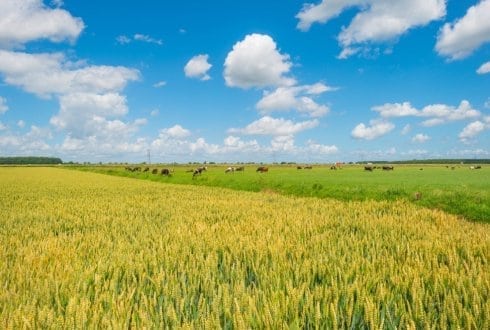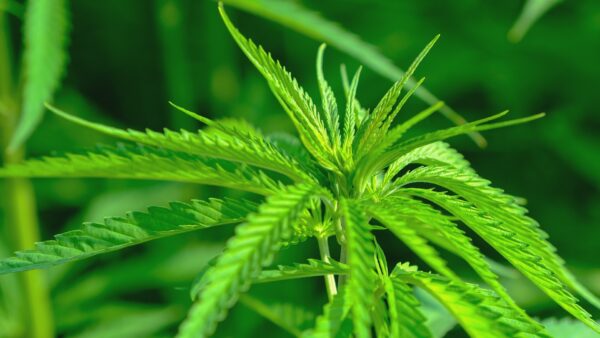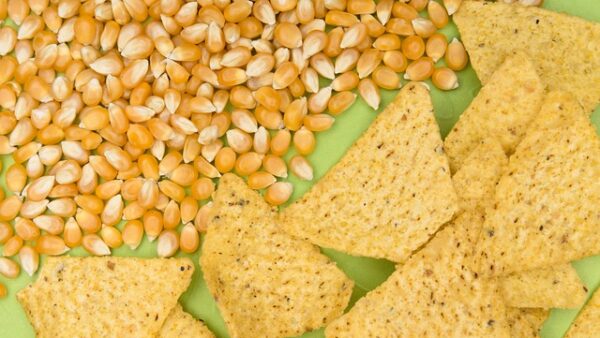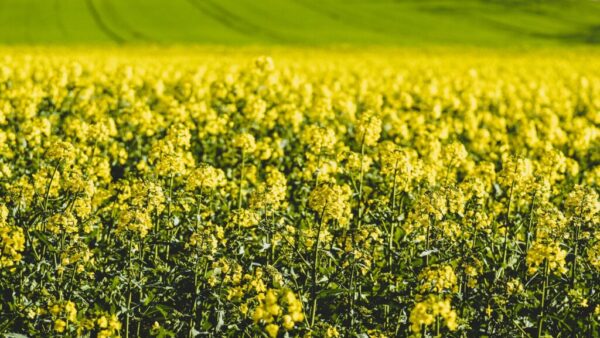For more than half a century, Dutch and European agricultural policy has focused on efficiently producing as much food as possible for a low price and with a reasonable income for the farmers. Using this policy that was developed by the legendary Sicco Mansholt, Dutch agriculture attracted admiration from beyond its borders and grew into a nation with the second-largest agricultural output in the world.
This great success of the last half century, however, is not a guarantee for the future. Time has come in our view, to think about the next steps, the transition towards a truly sustainable agriculture. Efficient production remains necessary, especially because the demand for food and other agricultural products and resources only continues to grow. The need to produce affordable, safe and healthy food, not just for the country but also for Europe and the world will continue for at least another half century. But the concepts of intensification and efficiency, however powerful they have been, are not enough. They need to be transformed into optimization of the use of all resources, not just at the level of the farm, but also broader at local, regional, national and transnational levels. Optimization of the interlocking systems at different scales is fundamentally different from maximization at the field, stable, greenhouse or farm level. It allows us to use land, water, chemicals and nutrients to optimal effects and to reduce or even eliminate the waste of residual biomass since this can be used elsewhere in the food system. This is indeed a fundamental transition requiring mental and policy adjustments. Moreover, it entails trade-offs because choices need to be made about what the best route to optimization is. It is the role of science to present clearly the costs and benefits of different types of transitions.
Circular agriculture
Shortly before the summer, Wageningen University & Research presented the concept note “Kringlooplandbouw” (circular agriculture), in which a new perspective is outlined for Dutch agriculture. This note was discussed in a technical briefing with the agricultural committee of the Dutch Parliament in mid-June. At 8 September, the Dutch minister of agriculture, nature and food quality, launched here vision on the transition of the Dutch agriculture in a direction of circularity.
Wageningen University & Research organizes once a year in Brussels the “Mansholt Lecture”, to discuss European policy and issues in the domain of food, agriculture and sustainable livelihoods. The “Mansholt Lecture 2018” will address the transition “Towards a circular food system in Europe”. In this leaflet we briefly outline the concept and perspectives of circular agriculture, based on our policy briefings in the Netherlands.
Later this year we will publish a booklet as a reference document for what has been presented and discussed at the “Mansholt Lecture 2018” on 19 September in Brussels.
We will first briefly outline what circular agriculture means in our opinion.
Let’s start with what it is not! Circular agriculture does not mean that we will return to the rural nostalgia of the early 1900s. Images from the period sometimes suggest a wonderful time that never existed: agriculture struggled with a high degree of illness, too little fertiliser, and the continuous risk of a bad harvest. Circular agriculture is not a blueprint meant to strangle farming businesses even further with oppressive dogmas, market requirements and government regulations.
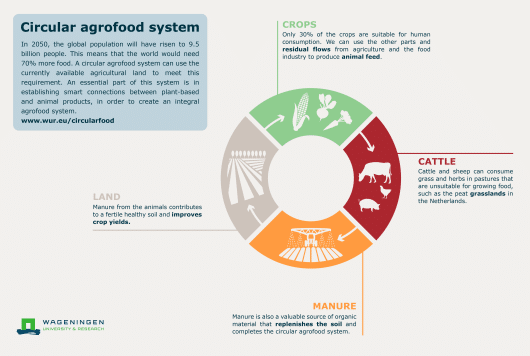
Circular agriculture is a collective search by farmers, interested citizens, businesses, scientists and researchers for the optimum combination of ecological principles with modern technology, with new partnerships, new economic models, and credible social services. It not only focuses on good yields and the sparing use of resources and energy, but also stresses the importance of putting as little pressure on the environment, nature and climate as possible.
Circular agriculture means that we keep residuals of agricultural biomass and tfoodprocessing within the food system as renewable reources. By being much more sparing with scarce resources and wasting less biomass, fewer imports are needed such chemical based fertilisers and remote livestock feedstocks. This means that the availability of circular resources will determine the production capacity and the resulting consumption options.
Closing cycles will be the new model on which future agriculture is based. The model will not be restrictive; it will instead be a new paradigm that provides the freedom for a wide range of company styles and earnings models and, of course, it will be adapted to the social and ecological environment depending on the availability of resources, markets, and buying options,. In short, there will be a wide range of activities varying from intensive to extensive; small to large, low-tech to hi-tech.
Making optimal use of waste streams
A central principle of circular agriculture is that no more acreage or resources are used than are strictly necessary. Fields will primarily be used for the production of food crops. In order to use them optimally, successive crops will be sown, so that food will be growing in the field almost year-round. Whenever possible, mixed crops will be added to the rotation. An important role has been established for plants that serve dual purposes, primarily as foodstocks, while the remains (leaves and stems) will be used as feedstock for livestock or biofertilizers to improve the soil.
Grass for livestock feed will only be cultivated in areas where field agriculture is not effective. The emphasis for this lies on multi-annual or permanent grasslands with various grass types and herbs. The food supply for livestock farming will be supplemented with residuals from field agriculture, horticulture and the food industry. These also include residuals that are not being fully utilised yet, such as protein rich beetroot leaves, or those that are under the current legislationnot permitted to be used now, such as insect and worm meal grown on biomass waste and “swill” (food scraps that have been cooked down). In the meantime, there are good techniques available for converting these “waste streams” into high-quality animal feed that is safe for humans and animals.
In circular agriculture, the cycles are closed: as nearby as possible and as distant as necessary. Optimal use of waste streams does not always mean that the cycles can be closed at the farm level or regional level. That is not necessary. Circular agriculture is a part of the circular food system, which, in principle, involves the entire world. We want to minimise waste streams across the world, but the aim is to ensure that cycles are closed at the whole range from local to national and international levels as much as possible.
For livestock farmers, circular agriculture primarily means that they use roughage and other feedstocks from field crop production, horticulture, and the food industry as well as the rest of the food chain. As a result, this will avoid feeding animals plant-based proteins that are also suitable for human consumption. To do so, the farmer will also examine alternative resources of the future, such as marine seaweed. They will also produce good-quality fertiliser by separating faeces and urine in the stable or manure pit.
For crop farmers, circular agriculture means using high quality animal-based fertilisersand crop remnants to stimulate soil life. Chemical based fertiliser will only be used when crops need additional nutrition due to yield exports. Crop farmers will also make maximum use of soil agrobiodiversity with mixed cropping systems and smart rotations. With new forms of precision mechanisation, based onm developments in sensors and robotics, this is feasible.
Healthy soil is the foundation
Agricultural production depends on healthy soil life and a good soil structure. The health of the soil is largely determined by the quality of the organic material it contains, the balance in groundwater dynamics and the availability of nutrients that are essential for people, animals, and crops: nitrogen, phosphorus, potassium, and a wide range of micronutrients.
Loss of nutrients leads to air, water, and ground pollution and a loss of biodiversity. It also exhausts limited resources, such as phosphate, which is then supplemented with mined fertilisers or low-quality manure slurries.
Due to the crucial role of nutrients in the cycle, healthy soil is one of the most important foundations for circular agriculture. Soil fertility and, primarily, the quantity of organic material are not only determining factors for crop yield, but also ensure that nutrients, trace elements, and water are better retained. Not to mention that in healthy fields with healthy soil life, there are fewer illnesses and pests. Something also worth noting: increasing the level of organic materials is a natural way to absorb and contain CO2 and other greenhouse gases.
In circular agriculture, soil life is optimally nourished using a resourceful combination of good quality animal-based fertiliser, preferably composted manure and crop remnants. Animal manure will no longer be stored in liquid form in the manure pit, but will be separated at the farm into dry (faeces) and wet (urine). Another interesting source of nutrients is sanitised sewage sludge originating from domestic wastewater treatment and process water from food industries.
Even when reuse is maximised, a nutrient loss in the cycle is inevitable. Shortages can be supplemented by including nitrogen-fixing crops in the rotation and through targeted use of artificial fertiliser, depending on the growth stage of the crop. Thanks to new technology, this can now be detected in practice at the level of the individual plant through tools such as leaf-colour sensors. The great advantage of precision fertilisation is not only that less fertiliser is required, but that it also reduces loss to the environment.
Farmers and nature
For as long as agriculture has existed, farmers have been engaged in a battle against illnesses and pests, which continuously manage to adapt their resistance. To this day, they rely heavily on the use of natural and synthetic chemicals and medicines in this “arms race”.
A broad systematic approach is assumed in circular agriculture, in which healthy crop and welfare of the animals are key. This approach begins with robust plants and animals, with genetic insights being used to select plants and animals that are more resilient to illnesses and pests as well as to the effects of climate change.
The resilience of crops will be enhanced by using the agrobiodiversity in, on, and around fields as a form of natural pollination and organic crop protection. For example, this can be done through the use of flowers at field edges, blocks of land, and beetle banks, which can serve as hiding places for wild bees and other pollinators as well as for natural enemies of different pest species. Incorporating natural processes into our methods is not only beneficial for agriculture, it also contributes to a beautiful and decidedly natural farming landscape. A form of circular agriculture that takes things a step further is called agroecological “nature-inclusive agriculture”, which is specifically focused on ecosystem services including the retention and use of nature and biodiversity in and around the farm in a natural farming landscape.
The climate benefits as well
Just as with other sectors, agriculture must also make a contribution to mitigate its greenhouse gas emissions. This is also important because the agricultural sector is extremely sensitive to the effects of climate change.
The key tenet of circular agriculture is to utilise agricultural biomass as often and as effectively as possible. This also means avoiding the natural degradation of unused biomass (crop remnants, fertiliser) and the accompanying production of carbon dioxide, nitrous oxide and methane. This also means less artificial fertiliser is necessary for circular agriculture, so that less CO2 is released during production. High-quality fertiliser (manure, soil, compost) also increases the retention of carbon in the soil, which is a natural way to combat climate change.
In turn, circular agriculture offers options to combat greenhouse gas emissions from agriculture to a far greater extent than the measures that are simply focused on making common agricultural processes more climate-friendly. It is precisely through this combination that agriculture can really deliver big results for the climate.
”Ligthhouse Farms” as places of inspiration
Of course, there are still many questions: How can circular agriculture be designed as a smart, healthy, and safe process in such a way that it yields the most benefits for the food production of the future, while simultaneously offering the best prospects for farmers and business community as well as for climate, nature, and society? We already know a great deal about efficient food production, yet still not enough when it comes to using cycles to prevent the waste and loss of resources and biomass.
Experimental testing sites at so called “lighthouse farms” allow us to learn and improve circular agriculture. These testing areas also serve as a source of inspiration and provide new knowledge for researchers and students. Important areas in which we must gain more experience include: preserving sanitary safety, actually reducing environmental pressure, and intelligently creating value from residues as coproducts. All of these actions must be taken into account with the understanding that the circular economy is not independent of the development of a broad, biobased economy which uses biomass for the production of materials and chemicals.
Video of the testing ground for agroecology and technology:
Click here to see the video” src=”https://seedworld.com/cdn/wp-content/uploads/20240118175830/348a1633-e367-4166-9c10-295f2eec575b_Proeftuin.jpg” alt=”
As already discussed, circular economy is not a blueprint: it is a collective search for new perspectives for the food supply and, in turn, for Dutch agriculture. Developing a circular food system, with circular agriculture being an integral component, is an enormous challenge for Dutch agriculture. It is shift comparable in scope to the move towards high-production agriculture in the 1950s and 1960s.
Although farmers may play the key role in this shift, it does not mean they can do it alone. A transition such as this demands effort from all parties in order to overcome technical, economic, legal, and social barriers. The development of a diverse range of new earning models and the corresponding business models and chain partners is essential. In the process, the Netherlands can return to the leading position it held in the 1950s as well as make circular agriculture the starting point for the global, sustainable agriculture system of the future. All of this can be achieved with a Dutch agricultural sector that continues to make valuable contributions to a vital trade balance.
Source: Wageningen University & Research


